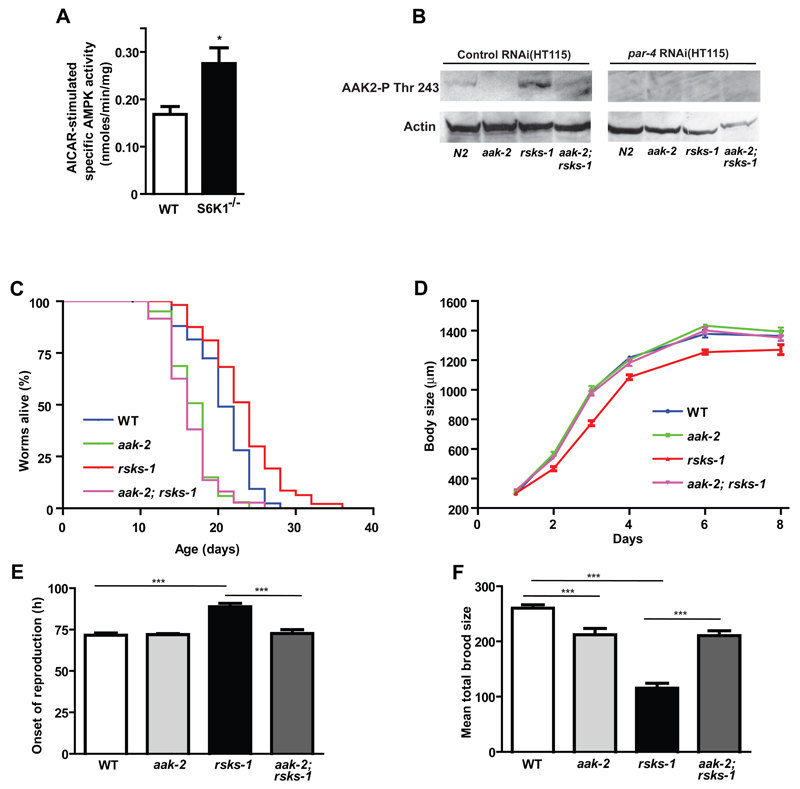Fig. 3.
Enhanced AMPK activation by AICAR of S6K1-/- hepatocytes, increased AAK-2 phosphorylation in rsks-1(ok1255) mutants and effects of loss of aak-2(ok524) on longevity and physiology. (A) AICAR-stimulated AMPKα2 activity in isolated hepatocytes from S6K1-/- mice. (B) Phosphorylation of AAK-2 Thr243 in rsks-1(ok1255) null mutants subjected, or not, to RNAi for par-4, the worm LKB kinase which effects this phosphorylation (C) Lifespan of rsks-1(ok1255) nulls with mutation of aak-2(ok524). (D to F) Body length, onset of reproductive function and brood size phenotypes in rsks-1(ok1255) mutants with or without aak-2(ok524) mutation. In (D) rsks-1(ok1255) is significantly different (p< 0.001; one-way ANOVA) from all other groups from day 2 onwards but rsks-1(ok1255);aak-2 is not significantly different from WT or aak-2. (A) to (C) show data from one representative experiment, and (D to F) show combined data from three similar independent experiments. Values (A and D to F) denote mean ± s.e.m. In (A), n = 3, and in (D), n > 8 for each strain and time point. For (E) and (F) n > 20 for each group. Asterisks indicate statistical differences using two-tailed t-tests, * p< 0.05, *** p < 0.001.

